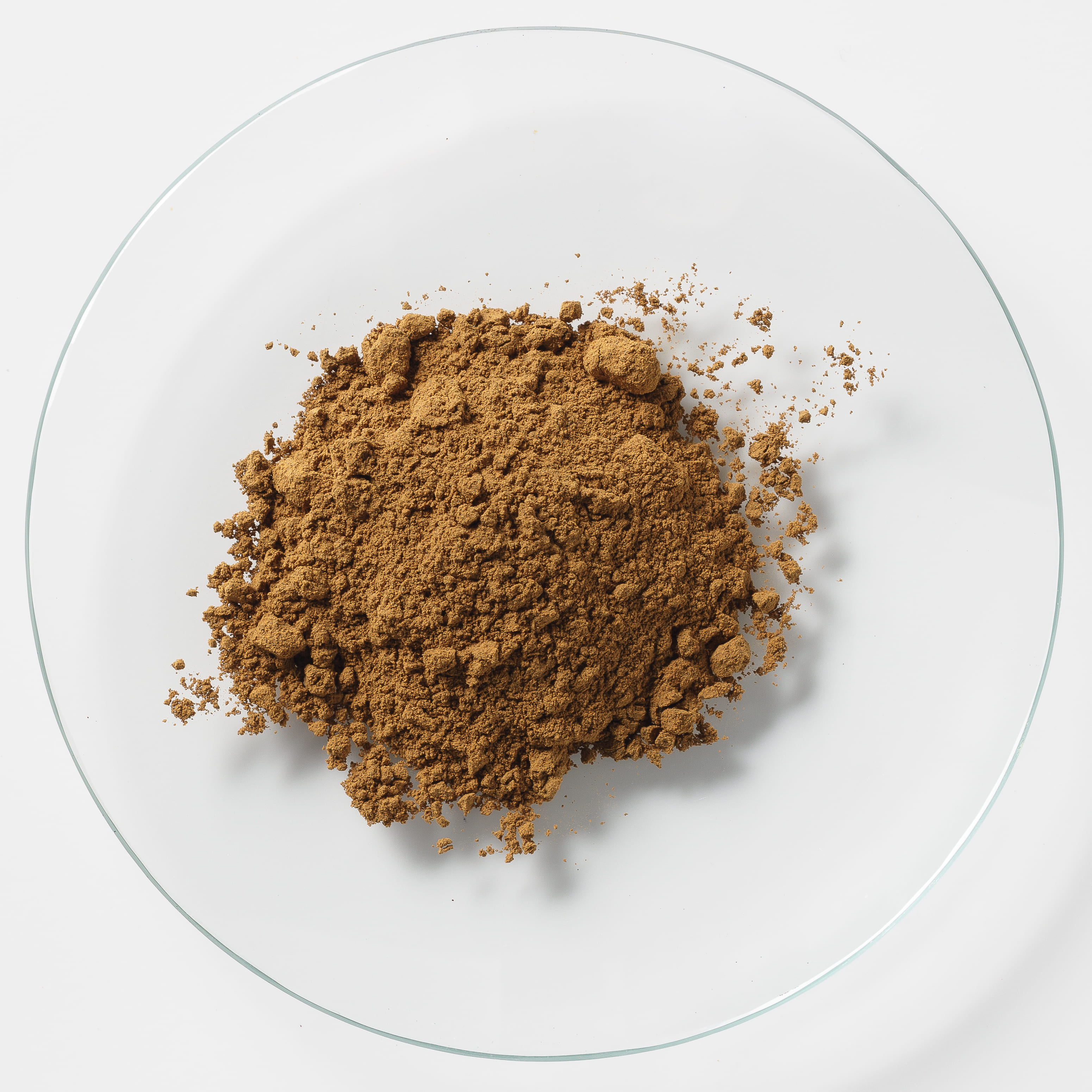Phellinus linteus Mycelia
Phellinus linteus Mycelia is a functional material made by liquid cultivation and powdering of Meshima mushroom mycelium. Compared to fresh mushroom bodies, this powder material is rich in polyphenols and show promising immunostimulating and antioxidant effects.
General Information
| Functions | ・Immunostimulatory effect ・Antioxidant effect |
|---|---|
| Form | Powder |
| Solubility | Insoluble in water |
| Content | More than 20% β-glucan |
| Form of delivery | 1kg (Product name: Phellinus linteus mycelia (S)) 10 kg |
※The information on this page is intended for people in the health food industry, and does not claim any effects or efficacy of the product.
Table of Contents
1.Development Story
1-1 Medicinal Mushroom Meshima
1-2 P. linteus mycelia Production Path
1-3 Polyphenols and β-glucan in P. linteus
2. Added Functionality
2-1 Influenza Prevention
2-2 Gallstone Formation Inhibition
2-3 Blood Sugar Levels Improvement
1.Development Story
- 1-1 Medicinal Mushroom Meshima
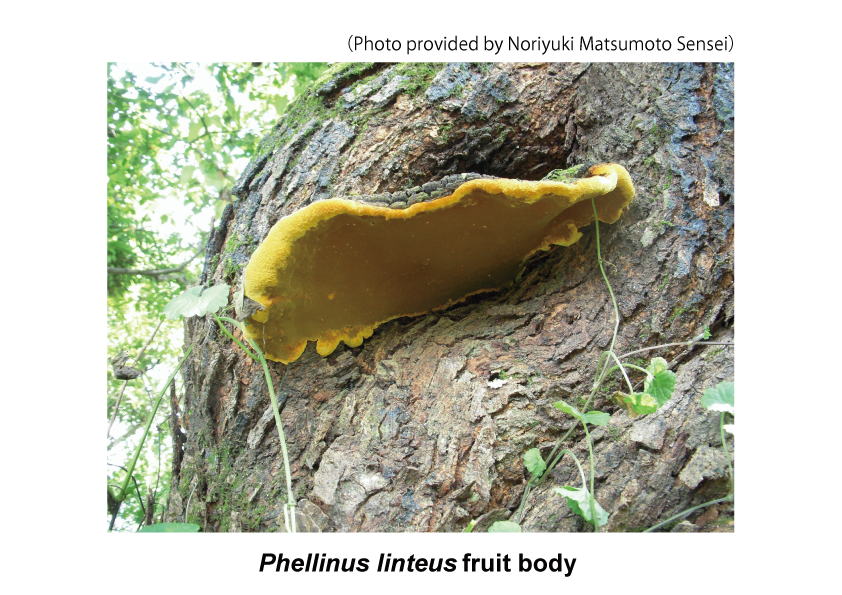
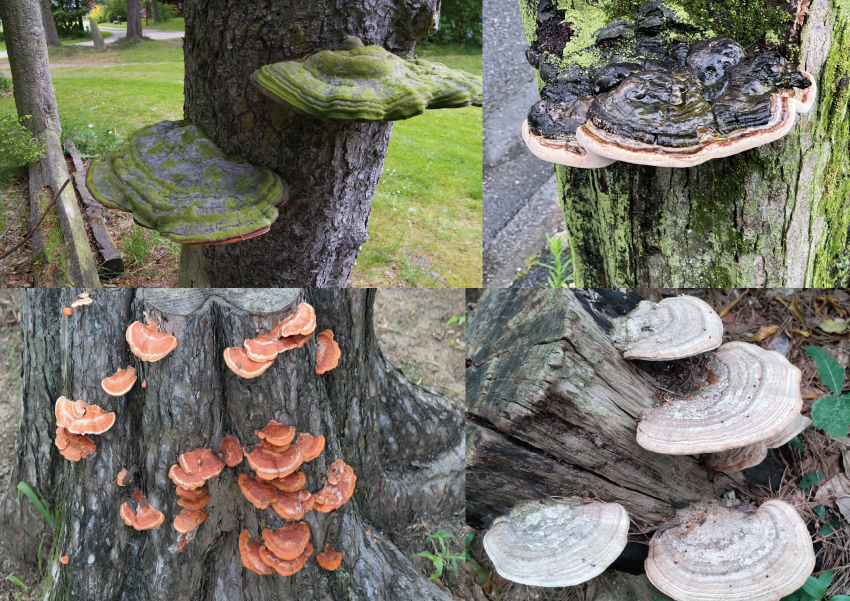
Meshimakobu (Sceintific name: Phellinus Linteus) is a kind of mushroom well known in Japan a closely related species of Polyporaceae of the Hymenochaetaceae family. It is said that the original Japanese name Meshimakobu related to the fact that these mushrooms were often seen on Meshima Island in Nagasaki Prefecture, growing naturally on mulberry trees. It is also has been used in Chinese medicine since long past, however, Meshimakobu began to attract wide attention in 1968 after a study by the National Cancer Center announced that it had the highest cancer cell growth inhibitory effect of 96.7% among other mushroom types. Due to its antitumor effect Meshimakobu has been added to various drugs and dietary supplements and became a representative of a medicinal-use mushroom.
- 1-2 Phellinus linteus mycelia Production Path
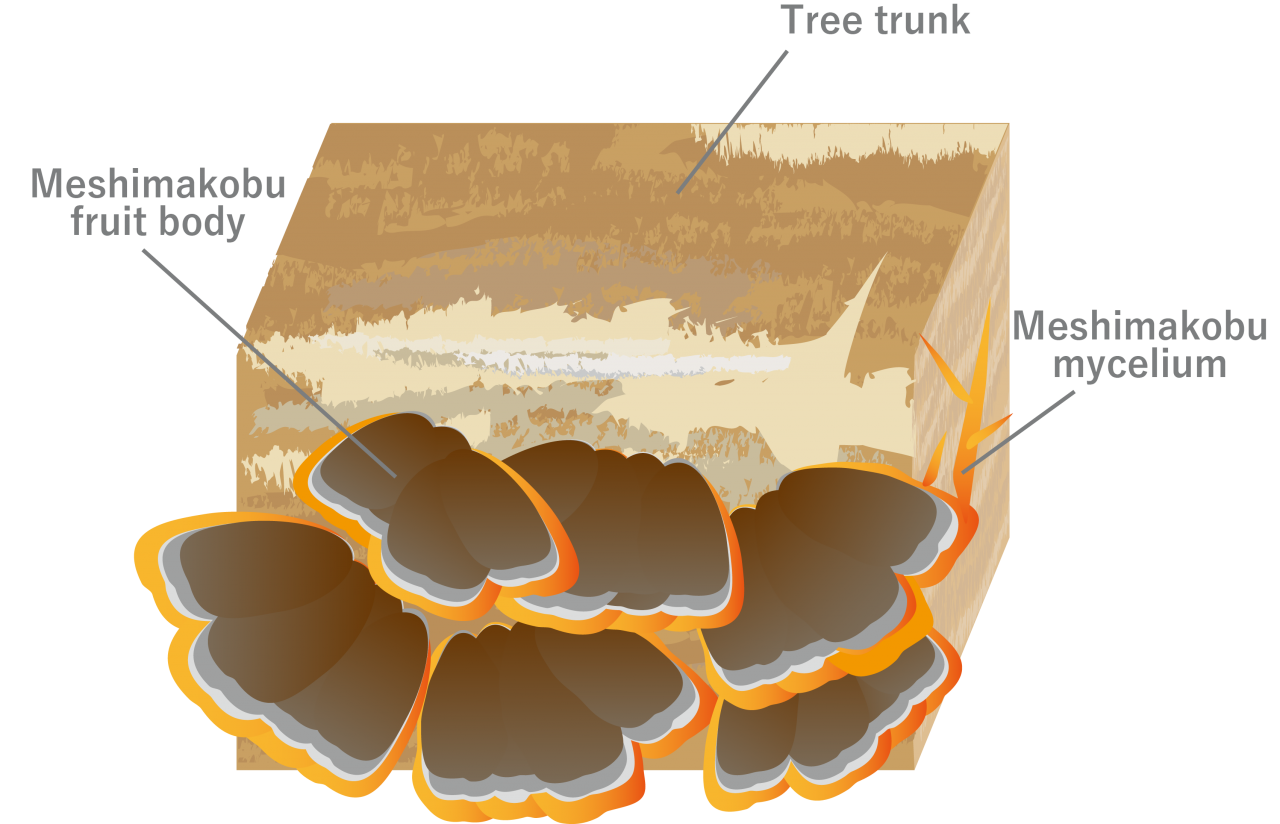
In the case of Meshimakobu, an umbrella-like part of the mushroom that appears on the surface of the tree is called “fruit body”, and the part inside the tree is “mycelium”. In the past mulberry tress where Meshimakobu grows naturally were abundant throughout Japan, however, with silk farming industry decline the number of mulberry trees also drastically decreased. Furthermore, as it takes around 20 years for Meshimakobu fruit bodies to reach a size of about 20 cm wide, it is sometimes even called a “phantom mushroom”. Nowadays, using our fermentation technology Meshimakobu can be conventially cultivated in large scale biotanks for mass production.

- 1-3 Polyphenols and β-glucan in Phellinus linteus mycelia
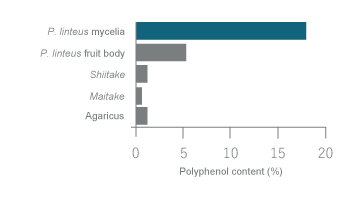
| β-glucan content |
|---|
| more than 20.0% |
Although no standard value has been set for this product, it has been reported that Phellinus linteus mycelia has a higher total polyphenol content than other functional mushrooms (Journal of the Japanese Society of Nutrition and Food Science 58 (4) 225-229, 2005). In recent years, it has also been reported that Phellinus linteus contains more than 20 types of polyphenols which show an immunostimulatory effects. We were able to report that Phellinus linteus polyphenols are involved in suppressing gallstone formation and glucose levels elevation in bloodstream.
2. Added Functionality
- 2-1 Influenza Prevention
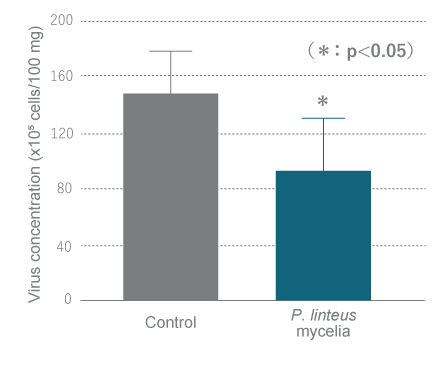
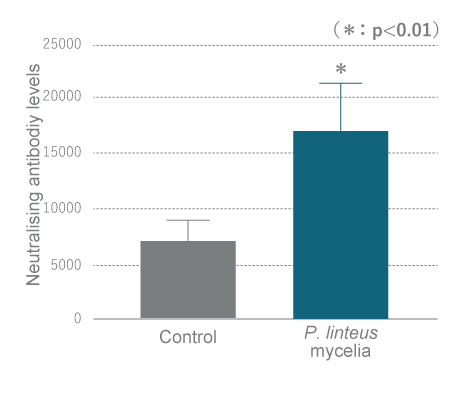
Trial Outline
Mice were administered with P. linteus mycelia and then an influenza virus was introduced intranasally. The amount of virus in the lungs and neutralising antibodies in the serum were measured afterwards.
| Subjects | 6-week-old female BALB/c mice (n=10) |
| Samples | P. linteus mycelia (5 mg/day) |
| Period | 21 days (oral administration of test sample from 7 days to 14 days after virus infection) |
| Test outline | Samples were suspended in 0.4 mL of water before the study and administered orally for 7 days. On the first day an influenza A virus (subtype of H1N1) was introduced to mice intranasally under anaesthesia with 2 × 104 PFU. Viral concentration in subjects’ lung was measured 3 days after and the serum neutralising antibody concentration was measured 14 days after the infection. |
Test Results
It was confirmed for the P. linteus mycelia group that viral concentrtion in lungs was significantly lower 3 days after the infection, when the viral load peaked. Subjetcs’ serum viral neutralising antibody titer was significantly higher 14 days after infection, when influenza symptoms recovered.
- 2-2 Gallstone Formation Inhibition
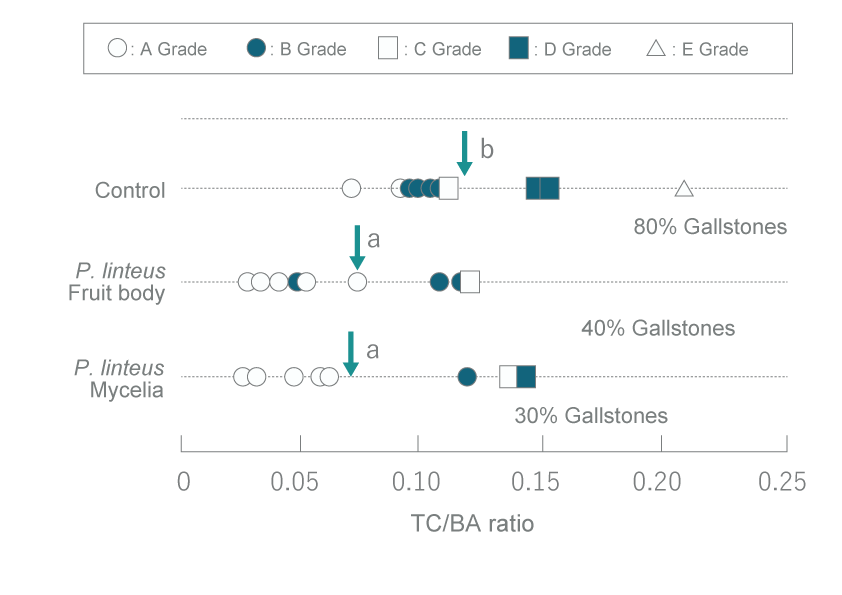
A Grade (no gallstones), B Grade (gallstone sand), C Grade (a few gallstones), D Grade (20% gallstones), E Grade (50% gallstones)
| Serum AI | Total cholesterol levels in liver (mg/mouse) | Total cholesterol in faeces(mg/day) | Total bile acids in faeces(μmol/day) | |
|---|---|---|---|---|
| Control | 1.23±0.15b | 121±4b | 11.1±1.2 | 1.22±0.14 |
| Fruit body | 0.91±0.08ab | 105±6a | 12.5±0.7 | 1.33±0.20 |
| Mycelium | 0.83±0.06a | 104±3a | 12.1±0.4 | 1.41±0.09 |
Higher values correspond to a higher arteriosclerosis risk. Groups in the table with different superscripts show a significant difference (p <0.05).
Trial Outline
Mice were fed with a special diet that promotes gallstone formation (cholesterol, cholic acid-loaded diet), to which either 3% P. linteus fruit body or P. linteus mycelia were added. The control group was fed with the same amount of sucrose diet. Gallstone formation and grade as well as lipid analysis in serum, liver, and feces were performed on the 21st day of the trial.
| Subjects | 5-week-old male ICR mouse (n = 10) |
| Samples | P. linteus fruit body or mycelia 3% compound feed (cholesterol, cholic acid loaded) |
| Period | 21 days |
| Trial outline | Mice were fed a diet for gallstone formation containing the test samples for 21 days. Blood was collected to determine gallstone formation in the gallbladder on a scale of the TC/BA ratio (total cholesterol to bile acid ratio). |
Trial Results
80% of the control group mice showed gallstone formation, compared to 40% of the group administered with P. linteus fruit body and only 30% gallstone formation was confirmed for the P. linteus mycelia group (7 out of 10 mice were grade A (no gallstones)). The TC/BA ratio also correlated with the severity of gallstone formation and tended to decrease with ingestion of P. linteus fruit bodies or P. linteus mycelia compared to the control group. Serum lipid evaluation showed that total cholesterol levels decreased, whilst there was an increase in HDL-cholesterol levels for the P. linteus mycelia group (data not shown), and a significant improvement in serum AI levels was observed. In addition, a significant decrease in hepatic total cholesterol and an increase in total fecal cholesterol and bile acid levels was shown. This might be a result of increased excretion of cholesterol in the diet and suppressed reabsorption of bile acids.
- 2-3 Blood Sugar Levels Improvement
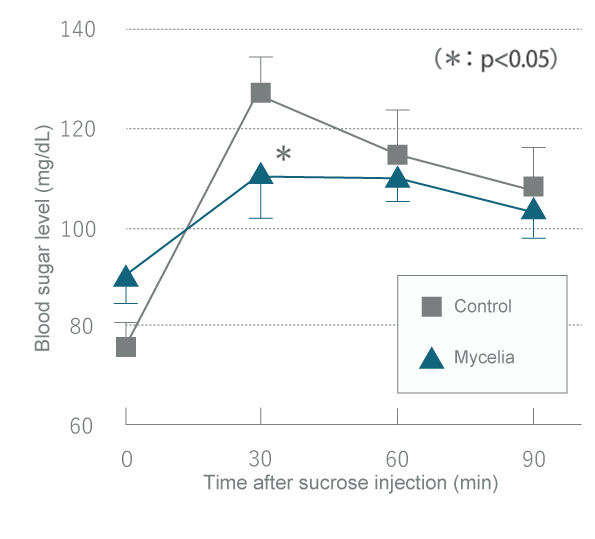
Trial Outline
To investigate the effect of P. linteus mycelia on blood glucose levels, healthy rats were administered a hot-water extract of P. linteus mycelia with subsequent in injection of glucose.
| Subjetcs | 5-week-old male Wistar rats (n = 10) |
| Samples | P. linteus mycelia hot water extract (800 mg/kg B.W) |
| Period | Single administration |
| Trial outline | Blood was drawn from the rats tail vein and blood glucose levels were measured after 20 h of fasting. 30 min after a glucose load (10 mg/kg B.W. of 20% sucrose solution orally) rats were administered with trial samples via a gastric sonde. Blood samples were taken 30, 60 and 90 min after sucrose administration and blood glucose levels were measured. |
Trial Results
Administration of a hot aqueous extract of P. linteus mycelia caused a gradual rise in blood glucose levels in healthy rats and with significant suppression 30 minutes after the test start. In addition, when diabetic model rats (STZ diabetic rats) were separately examined in the same way, they showed a gradual increase in blood glucose levels and the inhibitory activity of α-glucosidase was confirmed as the mechanism of action (data not shown).
